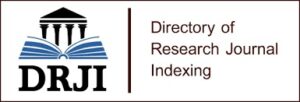THE IMPACT OF WESTERN THEATRE ON THE EVOLUTION OF MODERN INDIAN THEATRE
This research paper delves into the intricate relationship between Western and Indian theatre, exploring the multifaceted impact of cross-cultural interactions on the evolution of modern Indian theatre. Spanning historical, artistic, and educational dimensions, the study uncovers the dynamic synthesis of Western influences with indigenous traditions, shaping narratives, aesthetics, and training methodologies.
The historical overview examines the colonial period, tracing the introduction of Victorian drama and realism to India. Playwrights like Rabindranath Tagore creatively adapted Western forms, laying the groundwork for a synthesis of styles that defines modern Indian theatre. The research analyzes prominent examples, such as Tagore’s “The Post Office” and Sisir Kumar Bhaduri’s realist productions, illustrating the nuanced assimilation of Western theatrical forms.
Narrative forms witness a convergence of East and West, as Western storytelling structures, particularly the three-act play, find resonance in Indian theatre. Traditional Indian narratives blend seamlessly with Western formats, giving rise to hybrid and compelling storytelling. Examples like Tagore’s “The Home and the World” showcase the adaptation of Western dramatic structures to explore complex themes within the Indian context.
Aesthetics and stagecraft undergo transformative changes, with Western techniques influencing set designs, lighting, and construction. The research provides evidence of this impact, citing productions like Ebrahim Alkazi’s use of realistic sets and innovative lighting in “Tughlaq.” The integration of Western stagecraft enriches the visual aspects of Indian productions, creating a dynamic and engaging theatrical experience.
The influence extends to playwriting, where Indian playwrights assimilate Western themes and dramatic techniques. Works by Vijay Tendulkar, Mahesh Elkunchwar, and Girish Karnad exemplify the adaptation and subversion of Western conventions to address local socio-cultural issues. The synthesis of East and West results in narratives that resonate globally while rooted in the complexities of Indian society.
The educational landscape witnesses the infusion of Western acting methods and pedagogies into Indian theatre training programs. Stanislavski’s method, Lee Strasberg’s Acting, Linklater’s vocal techniques, and Laban Movement Analysis become integral components of actor and director training. The study explores how educational institutions strike a balance between global influences and the preservation of indigenous traditions.
Despite the positive transformations, the paper addresses critiques, including concerns about the potential dilution of indigenous traditions and the risk of cultural homogenization. The unequal power dynamics, legacy of colonialism, and commercialization of theatre present challenges that require careful consideration.
The research underscores the nuanced and symbiotic relationship between Western and Indian theatre, emphasizing the dynamic evolution of the modern Indian theatre movement. The interplay between East and West contributes to a vibrant and diverse theatrical landscape, enriching the global tapestry of performing arts. The findings offer insights into the complexities of cross-cultural interactions, providing a foundation for continued dialogue and exploration in the realm of theatre studies.
KEYWORDS: Western theatre, Modern Indian theatre movement, Cultural exchange, Theatrical practices, Cross-cultural interactions, Colonial influences, Narrative synthesis, Aesthetics and stagecraft, Playwriting adaptation, Educational impact, Hybrid narratives, Cultural diversity in theatre, Stanislavski’s method, Linklater’s vocal techniques, Laban Movement Analysis, Critiques of Western influence, Symbiotic relationship, Global perspectives in theatre, Post-colonial theatre, Contemporary Indian performing arts.




















